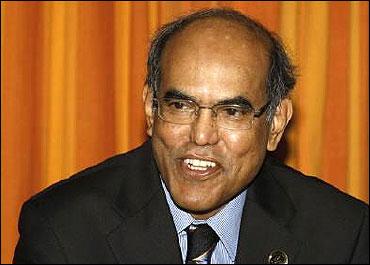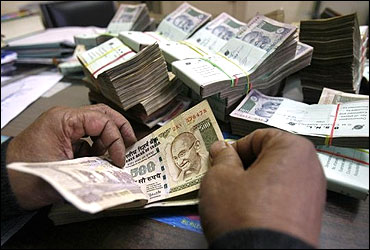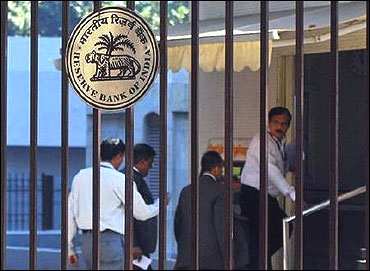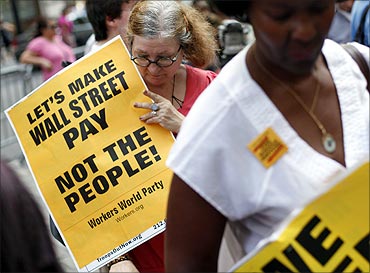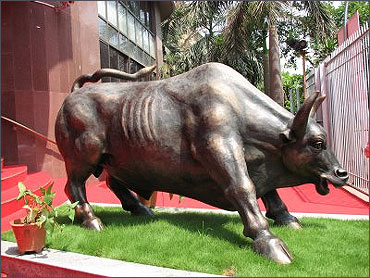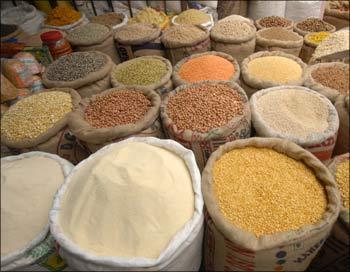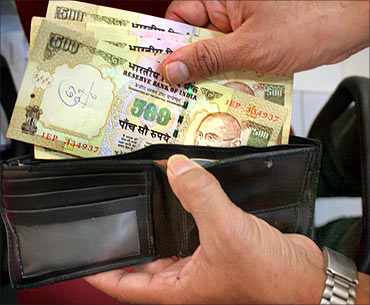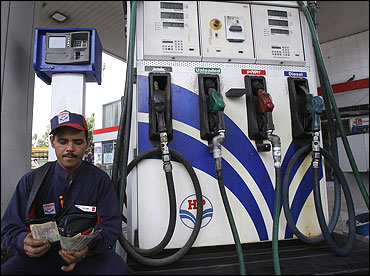 | « Back to article | Print this article |
12th rate hike by RBI; loans to cost more
Click NEXT to read more
12th rate hike by RBI; loans to cost more
As monetary policy operates with a lag, the cumulative impact of policy actions should now be increasingly felt in further moderation in demand and reversal of the inflation trajectory towards the later part of 2011-12.
As such, a premature change in the policy stance could harden inflationary expectations, thereby diluting the impact of past policy actions. It is, therefore, imperative to persist with the current anti-inflationary stance.
Going forward, the stance will be influenced by signs of downward movement in the inflation trajectory, to which the moderation in demand is expected to contribute, and the implications of global developments.
Click NEXT to read more
12th rate hike by RBI; loans to cost more
There is growing consensus that sluggishness will persist longer than earlier expected. Concerns over the sovereign debt problem in the euro area have added further uncertainty to the prospects of recovery.
Domestically, even as many indicators point to moderating growth, both headline and non-food manufactured products inflation are at uncomfortably high levels.
Click NEXT to read more
12th rate hike by RBI; loans to cost more
Inflationary pressures are expected to ease towards the later part of 2011-12. Stabilisation of energy prices and moderating domestic demand should facilitate this process.
However, in the current scenario, with the likelihood of inflation remaining high for the next few months, rising inflationary expectations remain a key risk. This makes it imperative to persevere with the current anti-inflationary stance.
Click NEXT to read more
12th rate hike by RBI; loans to cost more
The global economy slowed in Q2 (April-June) of 2011. Lead indicators such as purchasing managers' indices (PMIs) suggest a further moderation in economic activity in Q3, with the global manufacturing PMI approaching the neutral level of 50.
In recent weeks, global financial markets have been rattled by perceptions of inadequate solutions to the euro area sovereign debt problem, exposure of banks to euro area sovereign debt and renewed fears of recession.
Global recovery will also be affected by fiscal consolidation measures in some of the advanced economies.
In the US, apart from fiscal concerns, stubbornly high unemployment and weak housing markets continued to weigh on consumer confidence and private consumption.
Click NEXT to read more
12th rate hike by RBI; loans to cost more
Economic activity in the euro area decelerated significantly during Q2 of 2011 reflecting decline in both private and government consumption expenditures as well as deceleration in capital formation. Economic activity contracted in Japan reflecting the impact of the earthquake/tsunami.
In contrast to advanced economies, growth remained relatively resilient in emerging and developing economies, notwithstanding some moderation in response to monetary tightening to contain inflation.
Click NEXT to read more
12th rate hike by RBI; loans to cost more
The GDP growth decelerated to 7.7 per cent in Q1 of 2011-12 from 7.8 per cent in the previous quarter and 8.8 per cent in the corresponding quarter a year ago, RBI said.
Agricultural growth has accelerated, but industry and services have decelerated. The index of industrial production (IIP) slowed from 8.8 per cent year-on-year in June to 3.3 per cent in July.
However, excluding capital goods, the growth of IIP was higher at 6.7 per cent in July as compared with 4.4 per cent in June.
Cumulatively, the IIP increased by 5.8 per cent during April-July 2011, compared with an increase of 9.7 per cent in the corresponding period of the previous year.Click NEXT to read more
12th rate hike by RBI; loans to cost more
Corporate margins in Q1 of 2011-12 moderated across several sectors compared to their levels in Q4 of 2010-11. However, barring a few sectors, significant pass-through of rising input costs is still visible.
Monsoon rains so far have been normal. The first advance estimates for the 2011-12 kharif season point to a record production of rice, oilseeds and cotton, while the output of pulses may decline.
Click NEXT to read more
12th rate hike by RBI; loans to cost more
Headline year-on-year wholesale price index (WPI) inflation rose from 9.2 per cent in July to 9.8 per cent in August 2011.
Inflation in respect of primary articles and fuel groups edged up in August. Year-on-year non-food manufactured products inflation rose from 7.5 per cent in July to 7.7 per cent in August 2011 suggesting as yet persistent demand pressures.
The oil marketing companies raised the price of petrol by Rs 3.14 per litre with effect from September 16, 2011.
This will have a direct impact of 7 basis points to WPI inflation, in addition to indirect impact with a lag.
The new combined (rural and urban) consumer price index (base: 2010=100) rose to 110.4 in July from 108.8 in June. Other consumer price indices registered inflation rates in the range of 8.4 to 9.0 per cent in July.
Click NEXT to read more
12th rate hike by RBI; loans to cost more
The year-on-year money supply (M3) growth at 16.7 per cent in August was higher than the projection of 15.5 per cent for the year reflecting higher growth in term deposits and moderation in currency growth.
Similarly, year-on-year non-food credit growth at 20.1 per cent in August 2011 was above the indicative projection of 18 per cent set out in the July Review.
Liquidity has remained in deficit, consistent with the stance of monetary policy.
The daily average borrowings under the liquidity adjustment facility (LAF) were around Rs 40,000 crore in September (up to September 15, 2011). Money and the government securities markets have remained orderly.
Click NEXT to read more
12th rate hike by RBI; loans to cost more
Monetary transmission strengthened further with 45 scheduled commercial banks raising their Base Rates by 25-100 basis points after the July Review.
Consequently, the modal base rate of banks rose to 10.75 per cent in August from 10.25 per cent in July.
Fiscal conditions
The central government's fiscal imbalances widened during April-July of 2011 reflecting, primarily, the impact of decline in revenue receipts coupled with pressures from non-plan revenue expenditures on account of higher petroleum and fertiliser subsidies.
Click NEXT to read more
12th rate hike by RBI; loans to cost more
Growth momentum is weakening in the advanced economies amidst heightened concerns that recovery may take longer than expected earlier.
Although India's exports have performed extremely well in the recent period, this trend is unlikely to be sustained in the face of weakening global demand.
This, combined with the slowing down of domestic demand, to which the monetary policy stance is also contributing, suggests that risks to the growth projection for 2011-12 made in the July review are on the downside.
Click NEXT to read more
12th rate hike by RBI; loans to cost more
Also, current administered electricity prices are yet to reflect increase in input prices, even as many states have initiated increases.
Food inflation is at near-double digit levels, despite normal monsoons, underlining the fact that it is being driven by structural demand-supply imbalances and cannot be dismissed as a temporary phenomenon.
The inflation momentum, reflected in the de-seasonalised sequential monthly data, persists.
